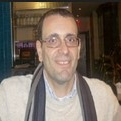Ionizing Radiation of High LET and DNA Damage Responses
A special issue of Life (ISSN 2075-1729). This special issue belongs to the section "Radiobiology and Nuclear Medicine".
Deadline for manuscript submissions: closed (28 July 2023) | Viewed by 2855
Special Issue Editors
Interests: space biology; radiobiology; cytogenetics; non-targeted effects
Interests: radiation biology; DNA damage and repair; clustered DNA lesions; systemic effects of radiation; systems biology
Special Issues, Collections and Topics in MDPI journals
Special Issue Information
Dear Colleagues,
Nuclear DNA is the main target of ionizing radiation (IR) exposure, followed by many types of DNA damages. DNA double-strand breaks (DSBs) induced by IR are considered the most relevant lesion for mutations and carcinogenesis, and unrepaired or misrepaired DSBs are a serious threat to genomic integrity. The different types and extents of DNA damage differ on the radiation types and doses. Higher linear energy transfer (LET) particle radiation, including protons, neutrons, alpha particles (helium ions), and high (H) atomic number (Z) and energy (E) (HZE) ions, is known to induce substantially more complex spectrum DNA damages induction and slower DNA repair kinetics. The cellular responses to high-LET radiation are still not fully understood. High-LET radiation is a useful tool in cancer therapy, but there are health risks to space radiation in future space travel.
This Special Issue aims to highlight recent advances in all aspects of DNA damage induced by high-LET ionizing radiations and cellular responses to these damages, including analytical methods, chemical biology, computational modelling, as well as proteomics. Submissions of original research articles, short communications, perspectives, and comprehensive review articles are all welcome (submission deadline 30 October 2022).
In order to plan this Special Issue, I would appreciate hearing from you if you are willing to contribute to this project. I hope this invitation will receive your favourable consideration.
Dr. Megumi Hada
Prof. Dr. Alexandros Georgakilas
Guest Editors
Manuscript Submission Information
Manuscripts should be submitted online at www.mdpi.com by registering and logging in to this website. Once you are registered, click here to go to the submission form. Manuscripts can be submitted until the deadline. All submissions that pass pre-check are peer-reviewed. Accepted papers will be published continuously in the journal (as soon as accepted) and will be listed together on the special issue website. Research articles, review articles as well as short communications are invited. For planned papers, a title and short abstract (about 100 words) can be sent to the Editorial Office for announcement on this website.
Submitted manuscripts should not have been published previously, nor be under consideration for publication elsewhere (except conference proceedings papers). All manuscripts are thoroughly refereed through a single-blind peer-review process. A guide for authors and other relevant information for submission of manuscripts is available on the Instructions for Authors page. Life is an international peer-reviewed open access monthly journal published by MDPI.
Please visit the Instructions for Authors page before submitting a manuscript. The Article Processing Charge (APC) for publication in this open access journal is 2600 CHF (Swiss Francs). Submitted papers should be well formatted and use good English. Authors may use MDPI's English editing service prior to publication or during author revisions.
Keywords
- high LET radiation
- clustered DNA damage
- DNA damage response







